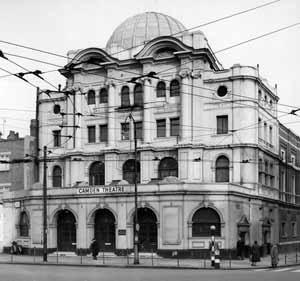
The photo, right, shows the exterior in 1958.
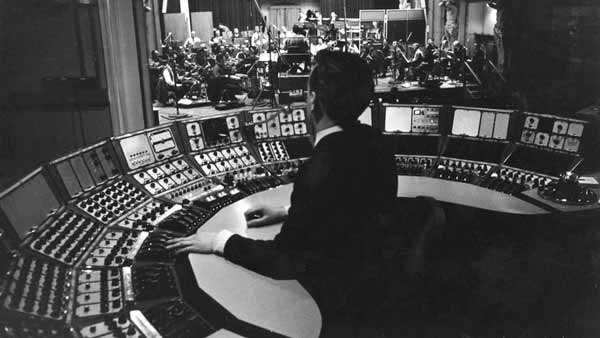
The Camden had the only Pye console in BBC Radio in the 1960s, although there were several at Television Centre. It was an overwhelming beast to a Studio Manager used to the old Type A mixers in Maida Vale and the Paris Studio, the strange mish-mash of Type A/B/C at Aeolian One or Piccadilly One, or the largest BBC console in the Outside Studios, the Type B Mk III at the Playhouse. The photo above shows the desk in situ in 1965 and those below show it as preserved by Chris Chambers.
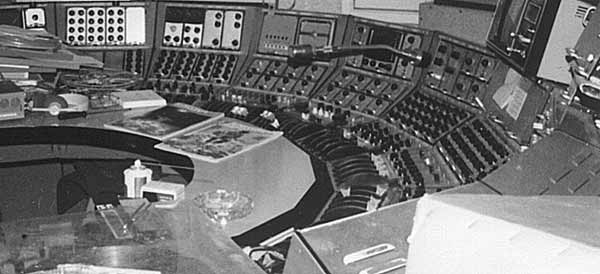
The Pye console was built in a semi-circular format and had four 8-channel groups and four independent channels. Each set of 8 channels was separated from the next by a wedge-shaped spacer; a centre section housed the group and independent faders. The master fader was a large rotary knob, with a second identical one alongside designated as the standby output.
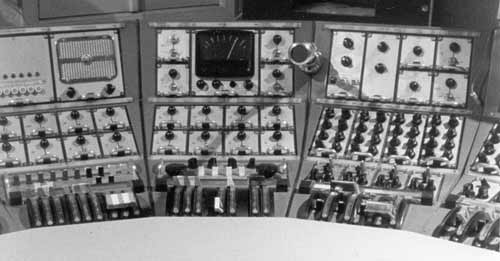
There were two associated rotary controls for each fader, echo send and PA send. The echo control was a dual log/antilog potentiometer providing echo mixture in a similar way to the standard BBC echo mixture switch but continuously variable. This was later used as a pan pot when the desk was adapted for stereo, which was simply done merely by using the echo send output as the ‘B’ leg and using the PA control as an echo send. Each channel had its own RSA – Response Selection Amplifier – the BBC term for what was known elsewhere (inaccurately) as an equaliser, and there were several (four?) compressor/limiters which could be patched into channels or groups. There were two enormous jackfields, one at each end of the console built into the ends of the semicircle.
The electronics were based on germanium transistors, which were highly sensitive to overheating. The console was cooled by a forced air system with the fan unit in the corridor outside the cubicle. A large orange lamp indicated that all was well, and it was rumoured that if the fan failed and the lamp went out we had about 30 seconds to power the desk down before it melted in a mini China Syndrome! The transistorised electronics was also quite noisy, with a very small margin between overload and excessive noise, and there were strict instructions about the permitted usable range of the main fader, which was about 10dB!
For audio monitoring, two loudspeakers were provided – an LSU10 for the Popular Music SMs and an LS5-1 for the Light Music SMs. Due to the large size of the cubicle it was difficult to achieve a satisfactory listening level with either of these units so they were often used together by the Pop Music SMs. To ensure that any distortion was not caused by loudspeaker overload the practice was to send tone at PPM6, set the desk LS control to maximum and turn up each LS gain control in turn until distortion occurred, then back it off a little. That was quite loud!
The Camden, being a theatre, had a raked stage i.e. it sloped down from the back towards the audience. This was a nuisance, especially when setting up microphone stands or wheeling pianos. The old “bent arm” microphone stands had no clamp to stop them rotating in the bases, and the weight of a 4038 microphone made the arm rotate so that it pointed down stage. This meant that piano mics, for example, had to be set up so that the stand was upstage of the instrument and the whole stand had to be moved to position the microphone where it was required.
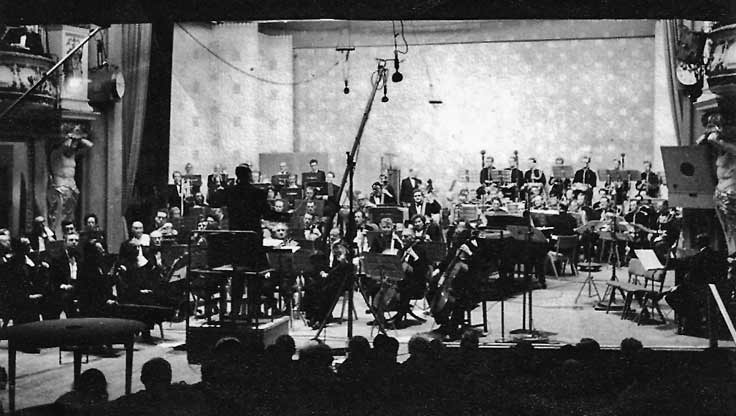
Friday Night is Music Night at the Camden - December 7th, 1962.
If you have memories or photos of this studio which could be added to this page please get in touch using the 'Contact' link below.

